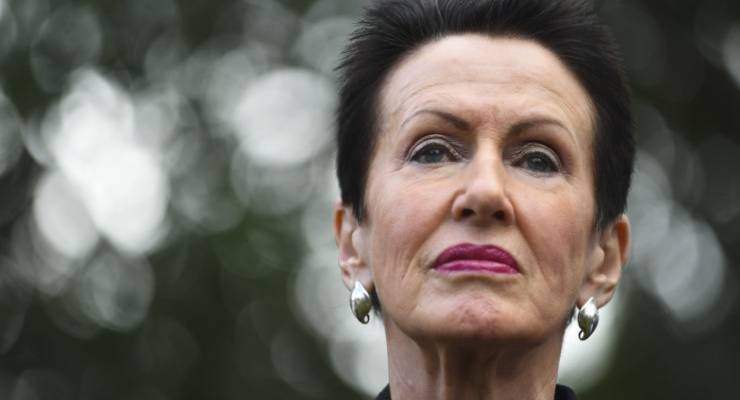
This week the City of Sydney declared a climate emergency, despite howls of outrage from predictable quarters. The declaration is timely — a recent United Nations report suggested we have just 11 years left to avoid a climate catastrophe. The declaration comes against a backdrop of years of government inaction, and Lord Mayor Clover Moore said successive federal governments had “presided over a climate disaster”.
Sydney’s declaration comes alongside a commitment to use 100% renewable energy by 2020 and to reduce its emissions 70% by 2024. The council also made vague promises to call on the federal government to reintroduce a carbon price. While Sydney is not alone in calling climate change an emergency, its unclear what exactly these declarations mean and whether they can do anything.
Who else has declared a climate emergency?
Climate emergency announcements like Sydney’s are gaining traction across the world. Before this week’s announcement, 658 jurisdictions covering roughly 119 million people around the world — including local, state and national governments — had declared climate emergencies.
In April, Scotland became the first country at a national level to declare an emergency, after First Minister Nicola Sturgeon met with student protesters on strike from school. In the following month, Wales, the rest of the United Kingdom, Ireland, Canada and France all followed suit in declaring an emergency.
Local municipalities in the UK, US and Australia have made similar calls. Sydney joins cities like London, Auckland and Vancouver in declaring an emergency. In May the ACT became the first Australian state or territory to declare a climate emergency, and so far 23 other jurisdictions in Australia, largely local governments, have made similar pledges.
What does it mean?
There’s no consistent understanding of what exactly a climate emergency response involves. Still, most declarations have also come in combination with commitments to more ambitious action. In the twilight of her prime ministership, Theresa May passed a law committing Britain to net zero emissions by 2050. At a local stage, declarations are often accompanied by promises to decarbonise by 2030 and develop infrastructure to support increasing use of renewables and electric cars.
Declaring an emergency can operate as a normative platform on which to build future policy. In the UK, where the declaration followed weeks of sustained protests from grassroots environmental group Extinction Rebellion, MPs announced plans to create a “citizens assembly”.
Still, there are limits to how much simply declaring climate change an emergency can do, especially when these commitments largely come at a local level. Importantly, Sydney’s declaration does not have the same effect as a “state of emergency”, which in some instances may give a state power to requisition property and suspend legislation.
Internationally, there have been quite reasonable allegations of hypocrisy at nations who talk a big game about the climate emergency while simultaneously sustaining the fossil fuel industry. The very day after Canada declared a climate emergency, Prime Minister Justin Trudeau approved the expansion of a pipeline that will pump almost 600,000 barrels of oil a day from Alberta to British Columbia.
Meanwhile, the UK, Canada, France and Ireland together subsidise their fossil fuel industries to the tune of $27.5 billion.
Some have argued that using the strident language of emergency, especially over an issue like climate change that still causes division and uncertainty, can alienate certain people. When the council of Guelph, Canada voted against an emergency declaration in May, it was argued that declaring an emergency would kick 20-40% of people out of the conversation, because they would conclude the issue was only for radicals.
Climate action from below
The steady proliferation of emergency declarations, which began at a local level, are a perfect example of how much climate action is being driven in the face of stagnant governments still manipulated by denialists and the coal lobby. Sydney’s declaration comes after Australia’s emissions have risen over the last four years, despite record-breaking temperatures and a water crisis decimating the regions.
After the Trump administration withdrew from the Paris Agreement in 2017, city and state governments picked up where the federal government left off. Some 3000 US cities pledged to meet the US’ Paris targets, with or without the administration’s help. California is moving to 100% renewables by 2045.
In Australia, serious climate action is being taken up by seemingly everyone except the Morrison government — from the Land and Environment Court who rejected a new mine based on its potential emissions, to shareholder activists forcing the hands of large corporations.
As national governments continue to drag their feet and prop up dying fossil fuel industries, climate action may have to be driven from below through pledges like Sydney’s.
Is this is a good strategy for combating climate change? Write to boss@crikey.com.au with your full name and let us know.








All this does is devalue the meaning of EMERGENCY. So next time there is an actual emergency the population will say – “gawd another emergency” – and continue playing with their iPhones.
Obviously everyone has forgotten the year 2000 emergency when the millennium clicked over- all computer clocks would shut down and so would the computers so the scenario was – planes dropping out of the skies, lights going off around the world, electricity grid collapses, no transport would be able to move well guess what : the world survived that emergency. The politicians just smell the wind of a problem then create faux concerns rather than managing the problems [or create a web site to give the impression of doing something when actually doing absolutely nothing ]. When next you here ‘ When next you hear the announcements ,” we have set up a website to address the plague of ingrown toenails besetting our nation “, then you know they are doing F****k all.
But it is an “actual” emergency Desmond. That’s the whole thing.
When it takes 20 – 50 years to change our trajectory to reduce our devastating impact on the environment it is an emergency now. The climate is chaotic, it has tipping points where things can change quickly from one state to another. We are told we have 10 – 20 years to prevent irreversible damage to the climate. Yet we are trying to build new coal fire power stations, we are exporting record amounts of coal and gas and we are doing almost nothing to develop renewable energy systems that can be clean and safe for the earth and the population for ever after.
That’s the problem, we are not treating it as an emergency.
Converted to International (SI) units, 600,000 barrels per day of amounts to 41 GW. Once expressed in the familiar quantities we learned in science classes, that 41 GW is a hefty flow of chemical energy across North America to oil ports on the Pacific coast. Considering that that enormous quantity is being extracted from a single geological unit (the Athabasca tar sands), it is clear that the rest of the world has plenty. Environmentalists cannot rely on any mineral resource actually running out. To say that the fossil carbon industries are dying is wishful thinking – we must actively obsolesce them.
Similarly, to say that we must convert to renewables because non-renewables are running out is hopelessly ignorant. Instead, we should say that we must convert to noncarbon power because the real danger is the waste from fossil carbon.
“Sydney’s declaration comes alongside a commitment to use 100% renewable energy by 2020 and to reduce its emissions 70% by 2024.”
100% renewables by next year? OK, at what stage are they now?
“with the City’s existing energy contract set to expire at the end of 2019, it decided to dive “head first into Sydney’s renewable future” by increasing its renewable electricity target to 100%. Specifically, Sydney will purchase only 100% renewable energy that’s generated by wind or solar starting next year, with new contracts to be negotiated over the next few months.”
So it’s 100% renewable electricity they are going to buy in. I suppose they are moving to electric cars and trucks too. Some staff use electric bikes. Way to go.
Oh OK Roberto….so if the wind don’t blow and the sun don’t shine, then Sydney will load shed??
You do understand how power purchasing works right?
In any case you can’t ever know exactly where your electrons are coming from in an interconnected energy system.
Exactly Spicelab…..you don’t know exactly where your electrons are coming from you don’t know if they are from 100% renewables, right??
With capacity factors of about 25% for solar and 30% for wind – it is a certainty that most of the electrons will come from coal, gas or hydro.
Unless Sydney has a direct line to solar, wind and hydro ONLY, the ‘purchase’ of Renewable Energy ONLY is just another scam to con the punters driven by the crazy Clover Moores colluding with rent seeking energy peddlars.
So is your issue that the renewable power being purchased is not actually dispatched to the grid?
By this logic, it’s not possible to purchase energy from a renewable generator until the grid is 100% renewable.
I do totally get your scepticism though, given the utter house of cards that emissions trading has turned out to be.
Is virtue signalling virtuous?
It’s neither here nor there because a virtue hidden doesn’t spread.
If as a nation we could lead by example, then we could ask countries like China to please reduce your carbon emissions but we’ve done little to reduce our own, so are in no such position.
It’s highly likely that Paris targets won’t be reached and are planned far too many years too late. Each country sets their own plan with no consequences aside from climate disasters which are already playing out.
We need to implement systemic change and Citizens Assemblies because current leaders can’t or won’t take responsibility for the drastic measures required to give us a slim chance of averting the worst climate scenario which is a waterless planet or the collapse of civilization.